
The Trends: Seniors very active in online college search. Juniors on pause.
COVID-19 INSIGHTS

Written by Alex Stepien, CEO
Published on March 25, 2020
The college admissions world is not immune to the sweeping effects of COVID-19. With so much uncertainty, all of us in the higher education sector are adapting to the new norm — a far departure for what has universally been an unchanged and predictable student enrollment process for decades.
To successfully re-establish our footing, we must be in lockstep with students and monitor their changing preferences and behaviors during this pandemic. In the coming weeks, I plan to share insights from what we’re observing on the Appily platform and identify some of the broad changes we see between seniors and juniors this spring. With my 11 years of professional experience working with colleges across the country, I’m hoping my perspective can offer a valuable source of information and some national context to what you might be seeing on the ground and with your prospective student base.
![]()
Background - The Appily Platform
For those who aren’t familiar, Appily has been serving high school students and their families with free content, tools, and technologies to get them to Day 1 at the college that’s right for them, since 2007. We’ve had more than 13 million students register to use our platform in that time frame, and in the last 12 months, have seen more than 1.4 million students create accounts. Consistently, we get more than 100,000 students registering in a given month, and our student population mirrors a representative sample of trends across the country - by geography, academic achievement, race/ethnicity, socio-economic group and the like. All that is to say, I believe the information presented below should be directionally accurate for what’s going on in the college bound population across the country. All data presented below is based on student activity on the Appily platform through Sunday, March 22, and has been edited to remove the effects of promotion on the Appily platform for client schools, to produce a more representative view of what’s going on in the student landscape. Here’s what I’m seeing right now.
![]()
Student Engagement, Traffic and Feedback Explained
We see a great deal of predictability in our student traffic patterns, so a few things stood out as we tracked activity in March thus far.
- Sophomores and juniors activities are lagging.
- Seniors are extremely active right now.
- The most referenced content is deadline changes, virtual events and testing info
Overall, new student registrants to our site are down. Seniors signing up this month are basically flat Y/Y, while Juniors, Sophomores, and Freshmen are down more significantly. We’re still seeing thousands of students per day creating accounts on the platform, but this is a drop from March last year. For context, our student registrations through February were very similar to the same time frame in 2019. This drop is consistent across all of our marketing channels - direct traffic (typically a sign of word of mouth), social media, SEO, and other online advertising. To me, this suggests that the larger shifts in online student behavior align with the COVID-19 response timeline that prompted high schools and university campuses to close.
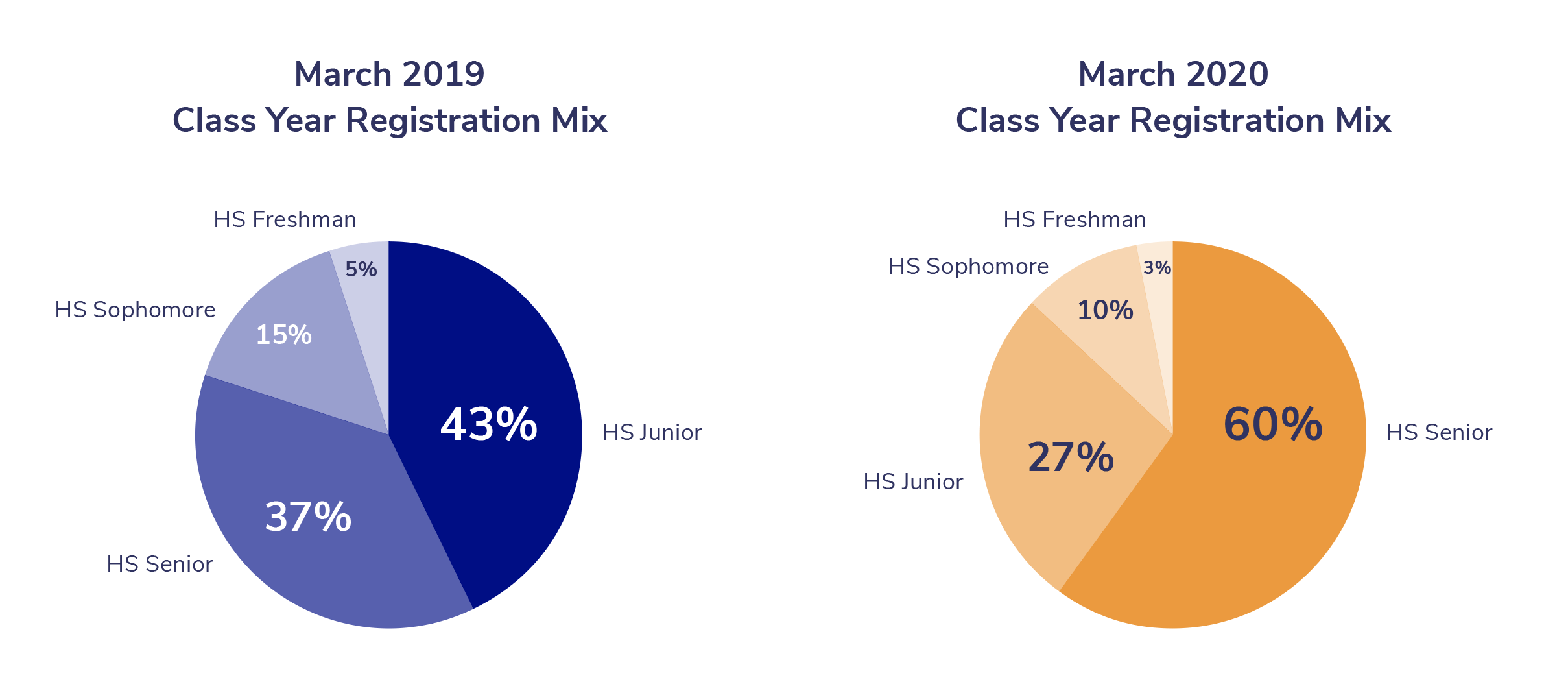
More interestingly, despite college research traffic being down broadly, the high school class of 2020 is very active on Appily right now. This is a good sign for colleges focused on improving yield for next fall. Digital marketing efforts to reach, communicate and influence students in their decision making as May 1 (or now June 1, for many institutions) comes closer should bode well. Seniors are still focused on their future in the fall; so enrollment professionals should be confident in their efforts to reach them via Appily and other digital platforms and should also make sure to diligently address seniors’ information needs right now.
![]()
Close the information gaps and reassure seniors.
Fresh student survey results from our COVID-19 Student Resource Center indicate that deadline changes, financial aid decisions and virtual events schedules are of most interest to seniors. These are top of mind for seniors right now.
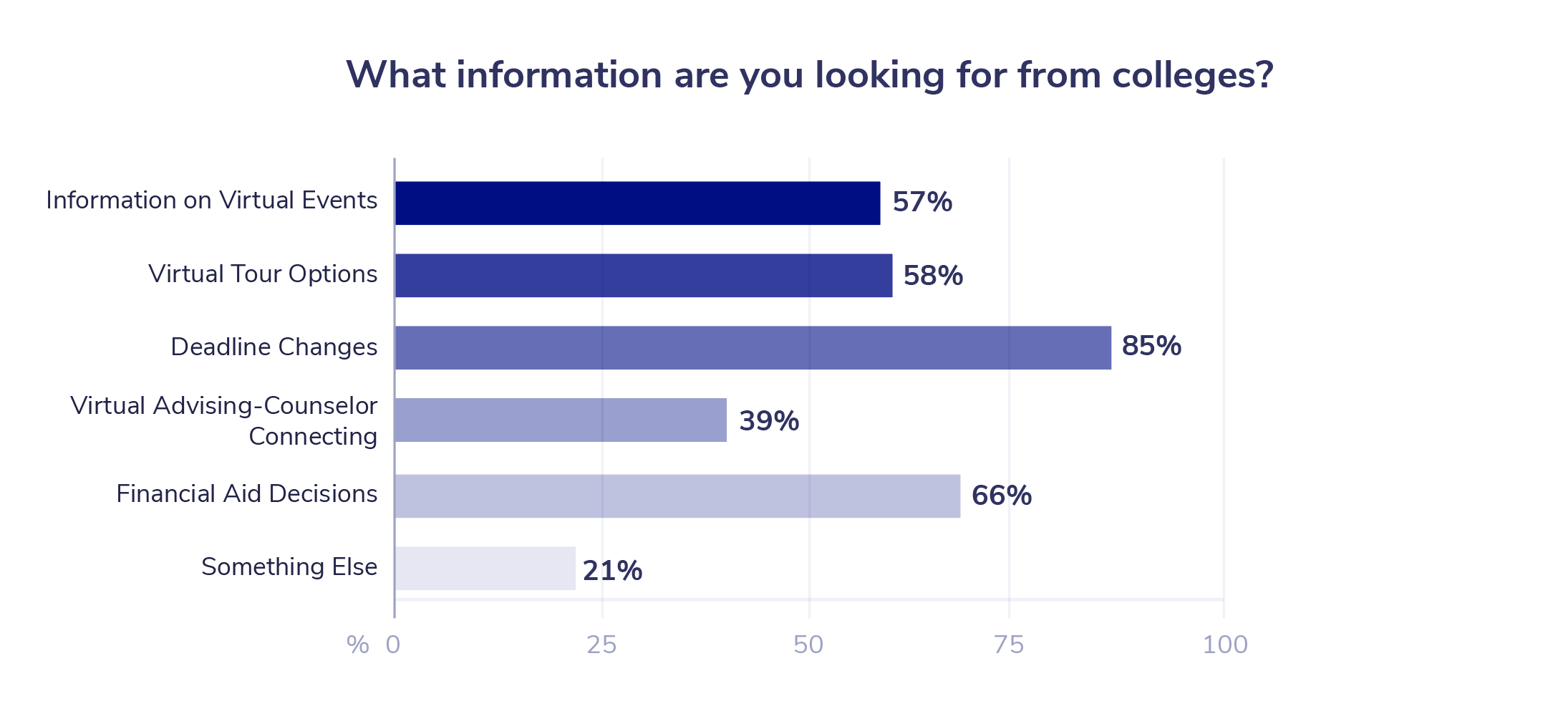
In our recent student survey, we asked “What has you most concerned about your college journey?” Many of the students’ open-ended responses reinforced the uncertainty associated with college selection, acceptance without college visits, and the impact of COVID-19 on scholarship and financial aid decisions. Here are some sample responses:
“I might not be able to meet the deadline for a deposit and I could lose my spot and scholarship. All because to make a deposit, I need to choose where I want to go, but unfortunately due to COVID-19 I am unable to visit colleges therefore unable to make a decision.”
“I'm worried that I won't be able to accurately tell if the school is a good "fit" since all of my tours have been cancelled. College visits have been the best way for me to tell if I will be happy at a school; so it is frustrating that I can't see them anymore. Some schools don't even have virtual tours; so it is really hard to tell if I can see myself going somewhere.”
“I'm very concerned with financial aid. The stock market and the economy as a whole has taken a huge hit and my parents have lost a lot of their savings, even their retirement fund. So for me, I'm most concerned about having the money to attend college.”
“Just how much the coronavirus will affect my first semester of college? Will it still happen? Will all the orientations and welcome weeks and freshman experiences still happen for me?”
“Trying to convince my parents to let me go out of state.”
Fear of the unknown is by far the dominant factor in the college decisioning process. Personalized outreach and timely communication on acceptance and financial aid will be critical to improve yield for this fall’s class.
![]()
Be poised to build the Class of 2021 on a shorter timeline.
Underclassmen research activity is a trend that we all need to closely monitor. I think we’re seeing a pull back from the historical college search and readiness timeline. Many students are adjusting to the new reality of online learning environments at home and to the fluctuating enrollment structure due to ACT/SAT test date cancellations and the absence of high school college counseling. We’re expecting this trend to reverse in the future, but it’s going to mean compressed timelines in the student college search journey. Between ACT/SAT test cancellations and the postponement of high school travel and prospective student visits, colleges should be prepared to adapt student prospecting options to source prospects and inquiries from new, digital-first sources and optimize communication flows, marketing techniques, and channels to drive the Class of 2021 process in a shorter timeline.
Digital marketing will also be critical to our success as we pivot fast to execute a shorter enrollment process. Open responses shared in our recent student survey unveil few surprises on how students are staying busy right now. They are online to learn, research, socialize and be entertained.
Being prepared to host virtual educational college fairs, tours, and even video counseling will help collapse steps in the traditional enrollment funnel. Connecting students with on-campus student mentors and posting video reviews may not be perfect substitutes for in-person meetings, but these are credible alternatives that scale as you court juniors into their senior year.
Student college preferences chiefly unchanged.
The next student behavior that we’re tracking is how COVID-19 may be changing the student population’s preference behavior towards attending public vs private institutions and in-state vs out-of-state. Specifically, we looked at whether the schools that students are engaging with and inquiring to connect with are shifting.
Here are the top 10 institutions by student interest, across the Appily platform (not filtered by geo, age, or any other factor).
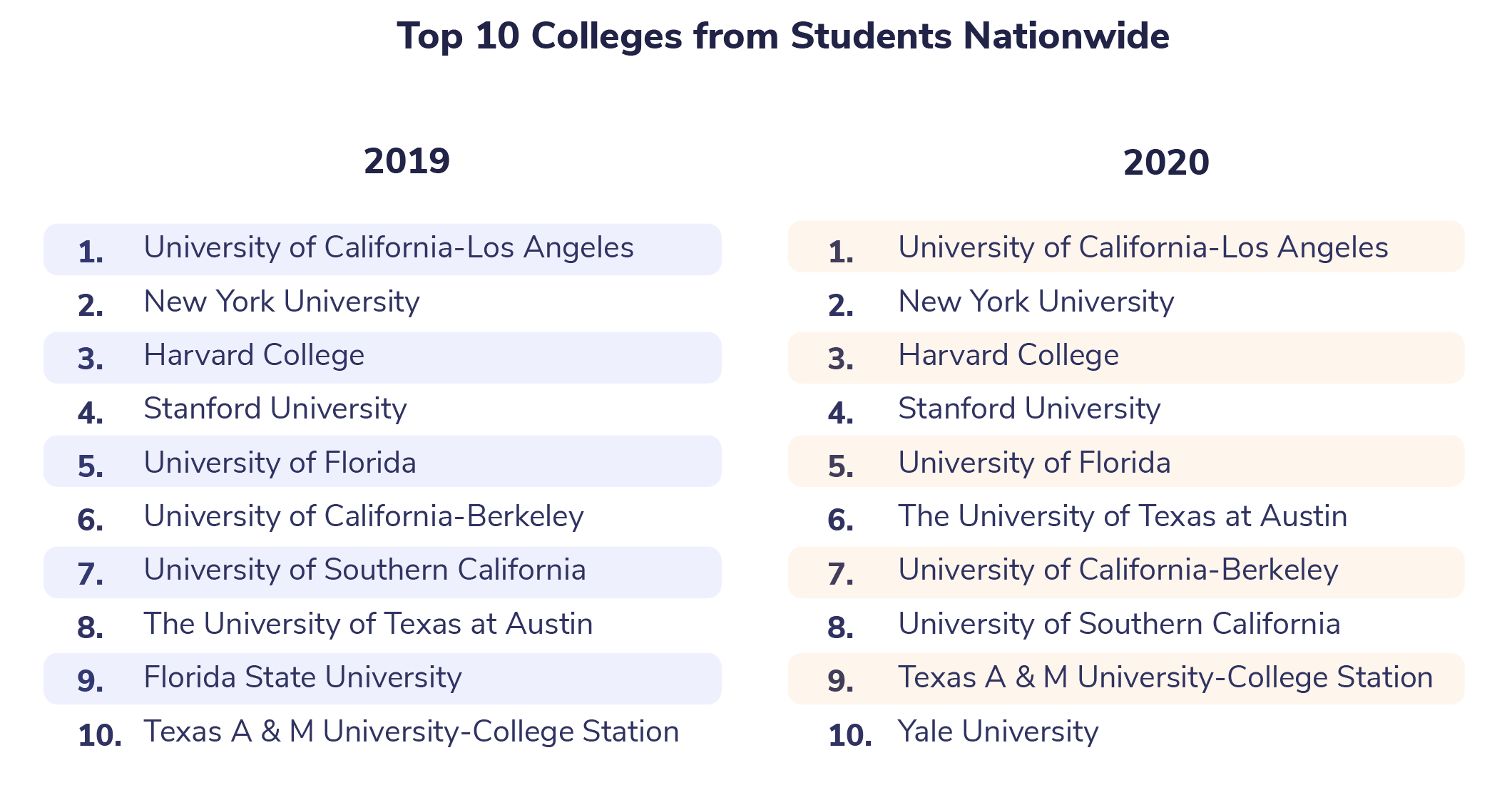
We sliced this same data in many different ways — by students’ home state, by graduating class, and a matrix of those combined, and are not seeing any real significant movement in preferences.
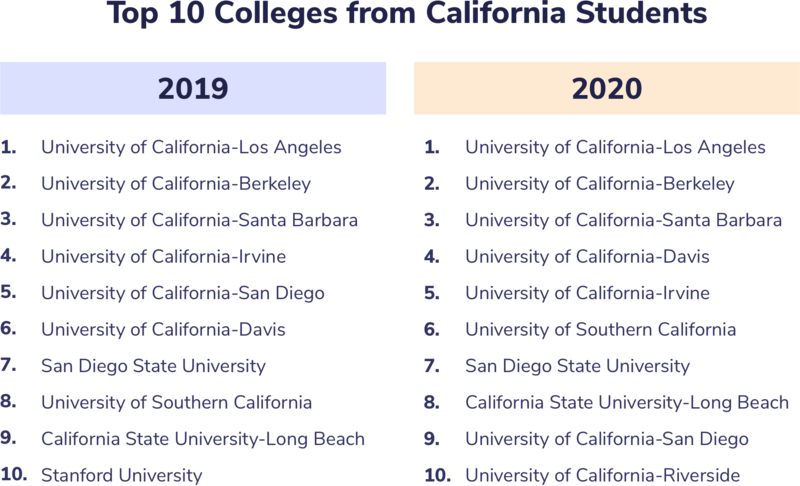
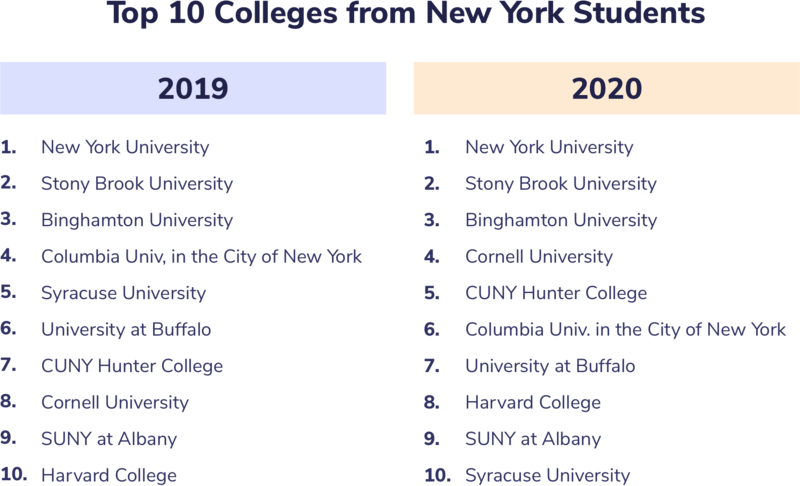
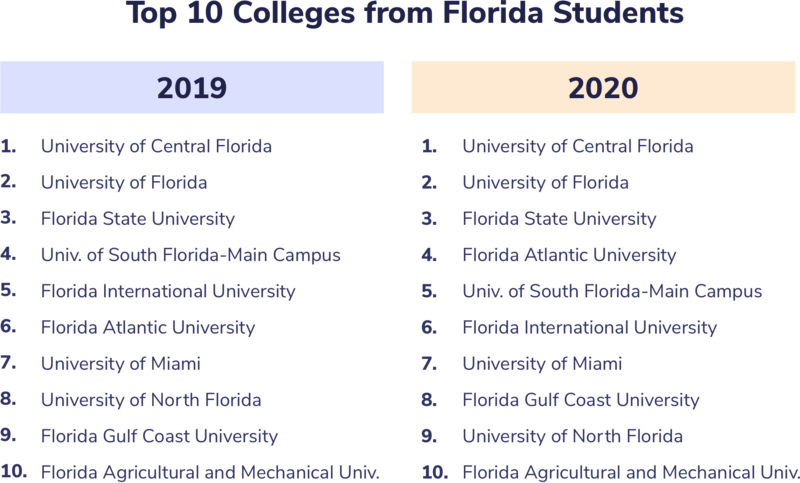
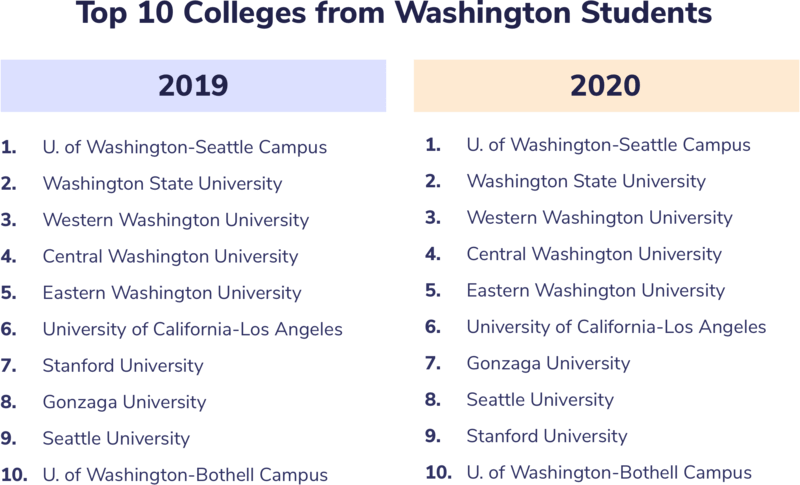
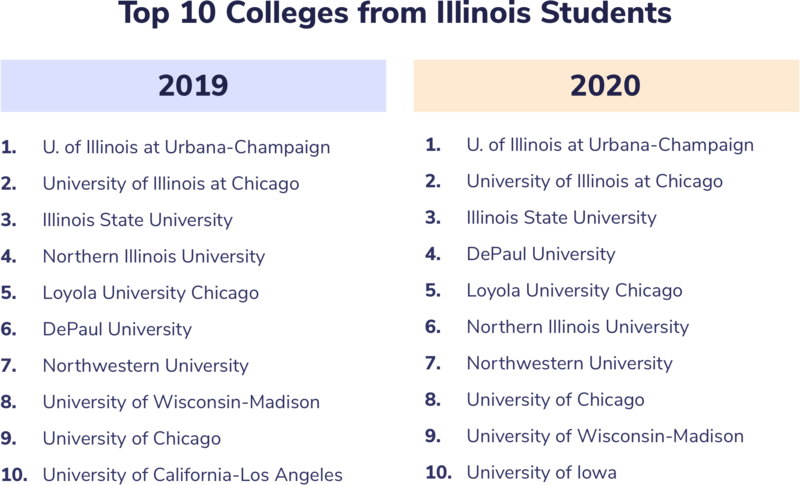
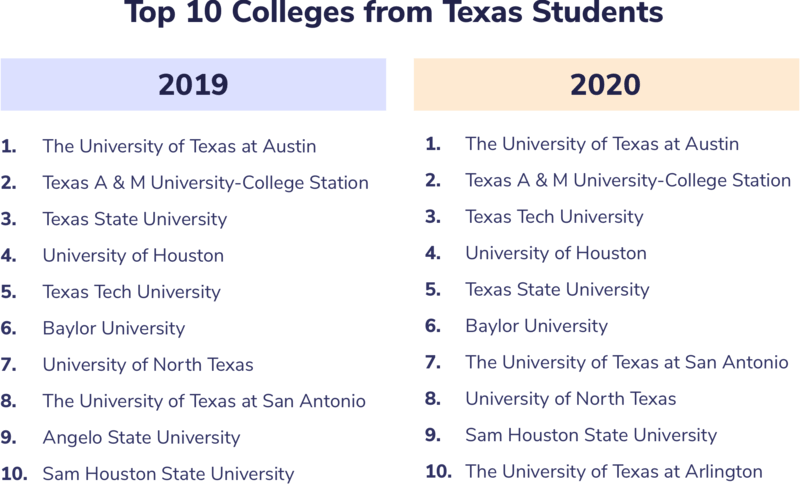
Broadly, I believe this to be a sign that student preference on school choice, by willingness to travel, attraction to brand/prestige, and even sensitivity to cost of attendance to be largely unchanged at this point. This is something that we’ll continue to monitor, but to now, it seems to suggest that most enrollment professionals don’t need to be consider- ing dramatically different targeting strategies in their prospective student pools for the class of 2021 and beyond.
![]()
Conclusion
These are intended to be early indicators and not necessarily predictors, but we felt they would be valuable for professionals across the country trying to make sense of what you’re seeing in your own data. We intend to update these insights in the weeks to come, and welcome your feedback and/or requests for other insights that we may be able to provide here.
For more information on student research activities impacting your institution,
you can reach one of our solution experts by sending an email request to [email protected]